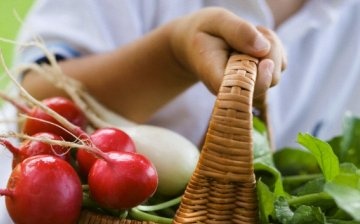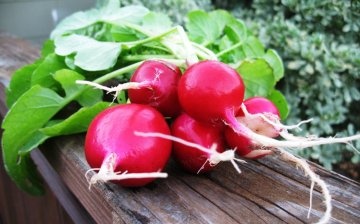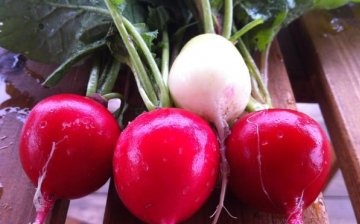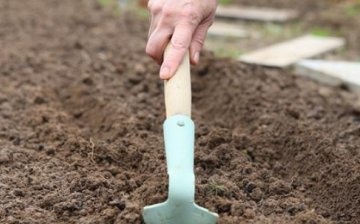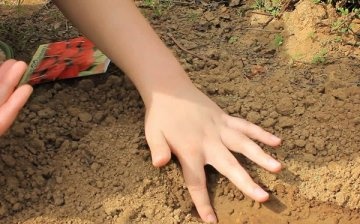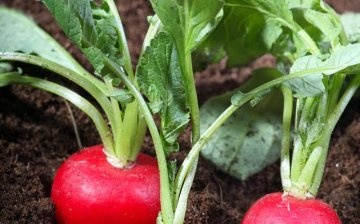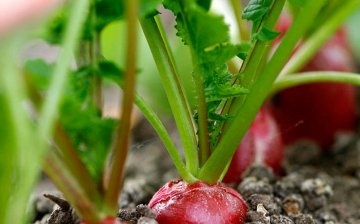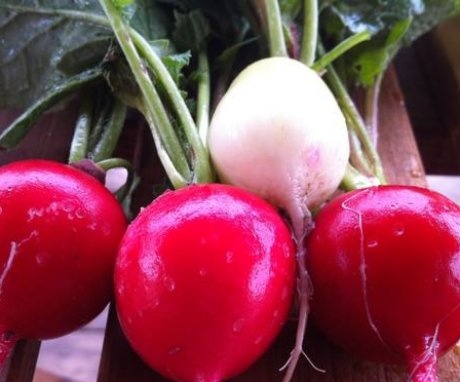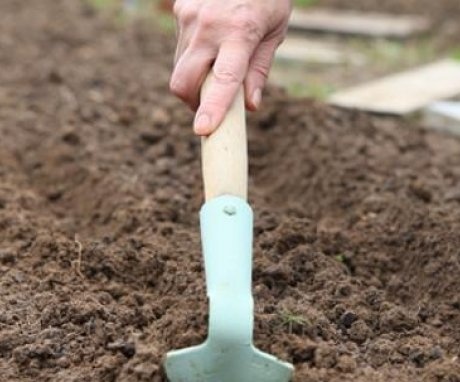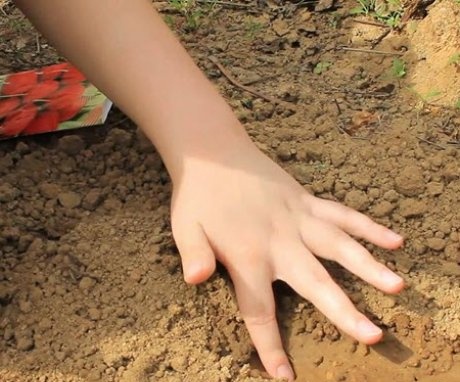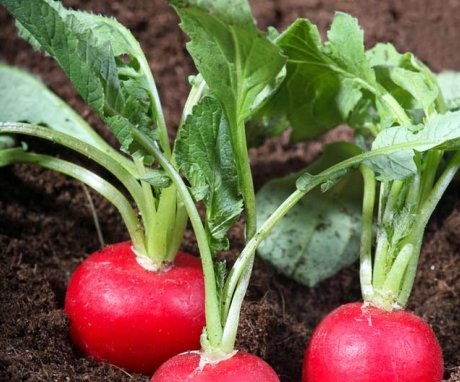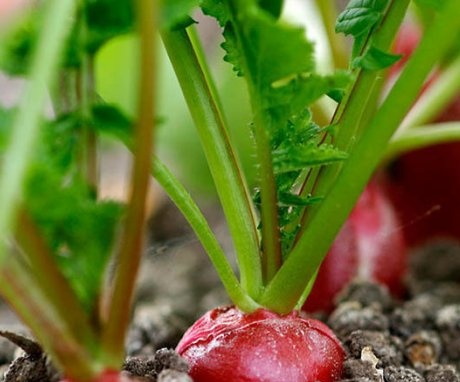Planting radishes in spring - preparing seeds and sowing in open ground
Introduced to the territory of Russia by Peter the Great, radish is currently cultivated in all regions. It is grown both outdoors and in greenhouses and greenhouses, harvesting at any time of the year. Radish contains many useful substances and microelements, mustard oil, it gives the root vegetable a tart taste and is an excellent antiseptic.
Content:
- Description of radish
- The best varieties for planting
- Site preparation and landing dates
- Sowing seeds in the ground
- Radish care
- Diseases and pests
Description of radish
Radish Is an annual root vegetable from the cruciferous family. It is considered the earliest ripening vegetable crop: early varieties ripen in 18 - 30 days, late in 45 - 60 days.
After the emergence of sprouts within twenty to thirty days, the radish forms green leaves in the form of a rosette and a root crop, the shape of which depends on the variety and can be round, oblong, conical or cylindrical.
The color of the root crop is very diverse: red, pink, yellow, white, purple, black.
The size of the root crop ranges from one and a half to four and a half centimeters in diameter. After passing the phase of technical maturity of root crops (about 2 weeks), the radish forms a flower stem about a meter high. Flowers (white, purple or pink) are collected in an inflorescence, flowering period 30 days. At the end of this period, the fruit of a pod is formed, containing 6-10 oval-shaped seeds. Germination period seed - 4 years.
The best varieties for planting
When choosing radish varieties, it is important to consider in what conditions you will grow a crop in a closed or in the open field... In the latter case, you need to choose frost-resistant varieties that will be able to withstand frost and bad weather.
The most productive varieties of radish are listed below, almost all can be grown both indoors and in beds.
Early varieties (ripening period up to 23 days):
- Early red
- Corundum
- Heat
- French breakfast
- Greenhouse (intended for cultivation in greenhouses, less often in the open field).
- Ruby
Mid-season varieties (ripening period - up to 35 days):
- Vera MC
- Sachs
- Slavia (Slava)
Late-ripening varieties (ripening period up to 40 days):
- Würzburg
- Rumpoosh (grown outdoors)
- Red giant (suitable for winter storage).
Site preparation and landing dates
For cultivation radishes are suitable for loose, fertile, neutral (or slightly acidic) soils; on poor soils, radishes grow poorly. If the soil is clayey, it can be improved by adding peat and coarse sand. The area for planting radishes should be sunny and sheltered from the wind.
The predecessors of radish in the garden can be vegetable crops that were fed organic fertilizersexcept for plants belonging to the cruciferous family. It is good to grow the radish itself before planting many vegetable plants such as cucumbers, pepper, tomato and potatoes.
Growing radishes annually in a new location can significantly improve crop rotation vegetable garden. In addition, radishes are a great marker and compactor for many vegetables.
The beds for sowing radish are prepared in the fall:
- Dig up the soil
- Delete weeds
- For each square meter of soil, add 60 grams of nitroamofoska and 4 kilograms of humus or compost
- In the spring, the soil must be loosened, leveled and slightly compacted.
Depending on the region, the planting dates for radishes range from March 20 to the end of April. It is recommended to plant seeds with an interval of a week, then you can harvest for a long time.
In June and July, it is better not to plant radishes, since the long daylight hours do not allow the formation of high-quality root crops.
Planting can be resumed in early August. In the cold season, radishes are grown in a greenhouse.
Sowing seeds in the ground
When landing in the greenhouse or greenhouse radish seeds do not require processing. When planted in the ground, it is better to select the seeds by size and weight and soak (you can add trace elements to the solution) by placing them in a damp gauze or cloth for a couple of days before germination.
To select seeds for sowing, they need to be put in a 5% salt solution, removed the seeds that have risen to the surface, and rinsed the settled ones with running water.
Such processing allows you to get early shoots and, accordingly, reduce the ripening period of the crop. For sowing radishes:
- Make grooves 7-10 cm apart.
- Moisten them.
- Sow radishes no more than 2 centimeters deep.
- Cover the bed with plastic wrap.
Seed germination temperature, seedlings appear:
- At a temperature of 10 degrees - in a week.
- At a temperature of 15 degrees - in ten days.
- At a temperature of 22 degrees - in three days.
Seedlings are able to withstand frosts down to -3 degrees, adult radish - up to -6 degrees. Long-term frosts retard the growth of plants, worsen the quality of root crops, and cause the flowering of seedlings.
After the appearance of one real leaf, the seedlings must be thinned out, leaving one strong sprout at a distance:
- 3 cm - for early varieties
- 5 cm - for mid-season varieties
- 10 cm - for late-ripening varieties
Radish care
Care for radish is quite simple and consists of watering, loosening and removing weeds. Radish is a light-loving plant, but does not tolerate heat. In hot dry weather, the roots become tough, bitter and lose their juiciness. Grown in sunny, well-hydrated (not excessively) areas, the radish has a juicy and delicate taste.
The best temperature for the growth of radish is 15 degrees, for the formation of a root crop - 18-20 degrees.
With thickening of plants, long daylight hours and a lack of moisture, radishes quickly shoot down. To get juicy fruits, radishes need to be watered regularly. At the same time, it is important to avoid stagnation of water so that decay of root crops does not begin. The regularity of watering is two to three times a week, in hot weather more often: in the morning and in the evening. Sprinkler irrigation increases air humidity well. After glaze the soil must be loosened.
The growing season for radishes is rather short, therefore, when grown on fertile soils, fertilization is not required. If the soil is not fertile enough, it is recommended to feed the radish a little with organic fertilizers... To do this, after the emergence of seedlings after seven days, the seedlings can be watered with water with the addition of manure infusion. The soil mulch dry hump or chopped grass.
It is important to observe the measure when feeding with fertilizers: an excess of nutrients contributes to the growth of leaves, shooting and deterioration of the quality of root crops.
Diseases and pests
By following the rules of crop rotation, most radish diseases can be avoided. But since this crop is early ripening, there is a temptation to plant the next batch on the same site after harvesting, which may entail infection of the plants.
The main pests of radish are cruciferous flea beetles and white beetles.
Cruciferous fleas gnaw holes in the leaves of the radish, as a result, the plant slows down growth and may die. Early shoots are especially sensitive to flea beetles. To fight the flea spray radish with ash solution: for one bucket of water - 200 grams of wood ash and 40 grams of ordinary laundry soap. Or simply sprinkle with tobacco dust or wood ash.
To get rid of the whites, the radishes are treated with the following solution: for a bucket of water - 15 grams of black pepper, 60 grams of salt and 25 grams of mustard. The most effective way to control pests is treatment insecticides, but they need to be used only if other methods have not worked.
The main diseases of radish:
- Bacteriosis
- Keela
- Blackleg
With bacteriosis, leaves are affected and turn yellow, and root crops rot. If there are signs diseases spray the radishes with 1% Bordeaux liquid. Keela causes wilting and yellowing of leaves, growths form on root crops. Treatment with a solution: for a bucket of water - 240 grams of fluffy lime. The black leg affects the leaves and base of the stem. Plants are treated with a solution: for a bucket of water - 16 grams of copper sulfate and 50 grams of laundry soap.
More information can be found in the video.



